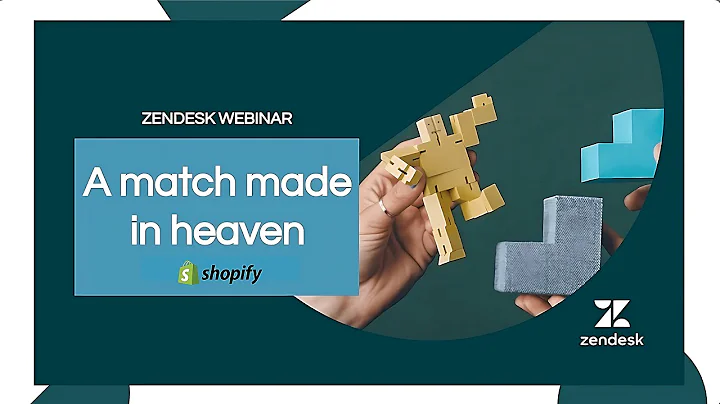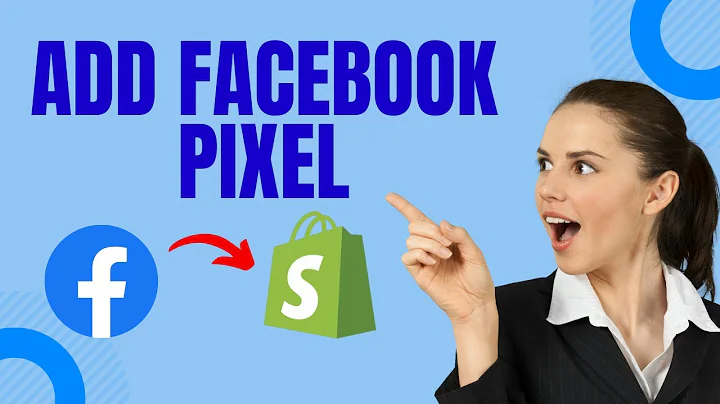Enhance and Customize Your Shopify Store with a Skilled Developer
Table of Contents
- Introduction
- What is Shopify?
- The Role of a Developer in Shopify
- The Front-End and Back-End of a Shopify Store
- The Need for a Backend Developer
- Pros and Cons of Using Apps vs Custom Development
- Building Private Apps for Unique Business Cases
- Integrating Third-Party Services and Platforms
- The Technologies Used in Shopify Development
- Preparing for a Smooth Project Migration
- Keeping Up with the Latest Trends in Shopify Development
- Upgrading to Shopify OS 2.0 and its Impact
- Understanding Shopify Hydrogen and Headless Commerce
- The Role of Headless Commerce in a Post-OS 2.0 Era
- Conclusion
Introduction
Shopify has revolutionized the e-commerce industry by providing a user-friendly platform for businesses to create and manage their online stores. While Shopify offers a range of built-in features, there are cases where additional functionality or customization is required. This is where a skilled developer comes in, helping businesses enhance their Shopify stores and cater to their unique requirements. In this article, we will explore the role of a developer in Shopify, the importance of back-end development, the benefits of custom solutions over apps, and the technologies involved. We will also discuss the migration process, staying updated with the latest trends, and the impact of Shopify OS 2.0 and headless commerce.
What is Shopify?
Shopify is a leading e-commerce platform that allows businesses to set up and manage their online stores. With its easy-to-use interface and a range of built-in features, Shopify has become a popular choice for businesses of all sizes. Whether you're selling physical products, digital downloads, or services, Shopify provides the tools you need to create an attractive online store, manage inventory, process payments, and track sales.
The Role of a Developer in Shopify
While Shopify offers a range of customization options, there are cases where the built-in features may not fulfill a business's unique requirements. This is where a developer comes in, providing technical expertise and coding skills to enhance a Shopify store's functionality. A developer can help businesses integrate third-party services, build custom apps, and create a seamless user experience.
The Front-End and Back-End of a Shopify Store
In a Shopify store, the front-end refers to the visual elements that customers interact with, such as the layout, design, and user interface. The back-end, on the other hand, refers to the server-side processing and functionality that takes place behind the scenes. While Shopify provides a user-friendly interface for managing the front-end, there are cases where back-end development is required to handle complex tasks, integrate with external systems, and provide additional functionalities.
The Need for a Backend Developer
Although Shopify is known for its ease of use, there are situations where the built-in features may fall short. A backend developer plays a crucial role in bridging this gap by creating custom functionalities that align with a business's specific needs. Whether it's integrating with a third-party logistics provider, automating data exchanges, or implementing unique promotions, a backend developer can enhance a Shopify store's capabilities and provide a tailored solution.
Pros:
- Increased customization options
- Ability to integrate with third-party services
- Enhanced functionalities and automation
- Tailored solutions for unique business needs
Cons:
- Additional development time and cost
- Complexity in managing custom functionalities
- Dependency on a skilled backend developer
Pros and Cons of Using Apps vs Custom Development
When it comes to extending the functionality of a Shopify store, merchants often have the option to choose between using existing apps or opting for custom development. While apps provide a convenient way to add functionalities to a store, they may not always meet a business's unique requirements. Custom development, on the other hand, offers the flexibility to build tailored solutions that perfectly align with a business's needs.
Pros of Using Apps:
- Convenient and ready-to-use solutions
- Wide range of functionalities available
- Cost-effective for common requirements
- Minimal technical expertise required
Cons of Using Apps:
- Limited customizability
- Possible conflicts with existing apps
- Dependency on third-party developers
- Additional costs for premium features
Pros of Custom Development:
- Highly customizable solutions
- Tailored functionalities for unique business needs
- Full control over the development process
- Possibility to integrate with any external system
Cons of Custom Development:
- Higher initial development cost
- Longer development time
- Dependency on skilled developers for updates and maintenance
- Potential compatibility issues with future Shopify updates
Overall, the decision between using apps or opting for custom development depends on the specific requirements of a business. While apps offer convenience and cost-effectiveness for common functionalities, custom development provides the flexibility and control required for unique business cases.
Building Private Apps for Unique Business Cases
In some cases, businesses require custom functionalities that are not available through existing apps or Shopify's built-in features. This is where the option of building private apps comes into play. Private apps are custom-built applications that are exclusively designed to cater to a business's specific needs. This approach allows businesses to have complete control over their store's functionalities and provides a tailored solution that aligns with their unique business requirements.
Pros of Building Private Apps:
- Tailored solutions for unique business cases
- Full control over functionality and user experience
- Ability to integrate with any system or service
- Enhanced security and data protection
Cons of Building Private Apps:
- Higher initial development cost
- Longer development time
- Dependency on skilled developers for updates and maintenance
- Limited availability of pre-built functionalities
When considering the option of building private apps, businesses should carefully evaluate their specific requirements and weigh the benefits against the potential drawbacks. It is essential to consult with experienced developers to ensure a successful implementation.
Integrating Third-Party Services and Platforms
For businesses operating in the e-commerce space, integration with third-party services and platforms is often crucial. Whether it's a logistics provider, a CRM system, or a marketing automation platform, the ability to seamlessly connect with external systems can significantly enhance a business's operations and customer experience. A skilled developer can help businesses integrate these services and create robust workflows that automate processes and streamline operations.
The Technologies Used in Shopify Development
Shopify development involves working with a variety of technologies to build and customize online stores. On the front-end, developers leverage HTML, CSS, and JavaScript to create visually appealing and interactive user interfaces. Shopify's templating language, Liquid, is used to generate dynamic content and display product information. For more complex front-end functionality, developers may use JavaScript frameworks like Vue.js or React.
On the back-end, developers use languages like PHP to handle server-side processing and interact with databases. They may also leverage Shopify APIs to communicate with the Shopify platform and access data. Structured Query Language (SQL) is used to manage and query databases, ensuring efficient data storage and retrieval.
Preparing for a Smooth Project Migration
When migrating from an existing platform to Shopify, businesses need to carefully plan the migration process to ensure a smooth transition. It is crucial to consider the existing data, custom functionalities, and integrations in order to preserve the necessary business processes and user experience. A thorough understanding of the data structure, migration tools, and the capabilities of the Shopify platform is essential to minimize disruptions and ensure a successful migration.
Keeping Up with the Latest Trends in Shopify Development
The e-commerce industry and technology landscape are constantly evolving, and staying updated with the latest trends and developments is crucial for success in the Shopify ecosystem. Developers can subscribe to newsletters, follow industry blogs, and actively participate in developer communities to stay informed about new tools, best practices, and innovative approaches to Shopify development. Regularly updating skills and knowledge helps developers deliver cutting-edge solutions and provide valuable insights to merchants.
Upgrading to Shopify OS 2.0 and its Impact
In 2021, Shopify introduced OS 2.0, a major update to its operating system that powers Shopify stores. OS 2.0 brings significant performance improvements, including faster page load times and improved backend processing. The update also introduces new features and functionalities, such as enhanced customization options and improved app integrations. Developers need to ensure that their themes and apps are OS 2.0 compatible to take full advantage of these benefits.
Understanding Shopify Hydrogen and Headless Commerce
Shopify Hydrogen is the company's foray into headless commerce, where the front-end and back-end of an e-commerce store are decoupled. With headless commerce, businesses have more flexibility and control over the front-end experience, allowing for highly customized and unique user interfaces. Shopify Hydrogen offers native integrations and tools to build headless applications within the Shopify ecosystem.
The Role of Headless Commerce in a Post-OS 2.0 Era
With the introduction of Shopify OS 2.0, the need for traditional headless commerce approaches may be reduced. While headless commerce still offers advantages in terms of customization and flexibility, the improved speed and customization options provided by OS 2.0 may eliminate the need for some businesses to adopt a headless approach. The decision between traditional Shopify vs. headless commerce depends on the specific requirements and long-term goals of a business.
Conclusion
In the ever-evolving world of e-commerce, Shopify continues to be at the forefront, providing businesses with a user-friendly platform to create and manage their online stores. While Shopify offers a range of built-in features, there are cases where additional customization and functionality are required. Skilled developers play a crucial role in enhancing Shopify stores, building custom apps, and integrating third-party services. Understanding the front-end and back-end of a Shopify store, exploring the pros and cons of app usage versus custom development, and staying updated with the latest trends are essential for success in Shopify development. Whether migrating to Shopify, upgrading to OS 2.0, or exploring headless commerce with Shopify Hydrogen, careful planning and the support of experienced developers can help businesses thrive in the competitive world of e-commerce.
Highlights:
- The role of a developer in Shopify is crucial in enhancing a store's functionality and customizing it to meet unique business requirements.
- Back-end development plays a significant role in integrating third-party services, automating processes, and providing additional functionalities.
- Choosing between apps and custom development depends on the specific requirements of a business, offering convenience vs. flexibility.
- Building private apps allows businesses to create tailored solutions and have full control over their store's functionalities.
- Integration with third-party services and platforms enhances operations and customer experience.
- Shopify development involves technologies like HTML, CSS, JavaScript, Liquid, PHP, and SQL.
- Migrating to Shopify requires careful planning to ensure a smooth transition and preserve existing data and functionalities.
- Staying updated with the latest trends in Shopify development is crucial for delivering cutting-edge solutions.
- Shopify OS 2.0 brings significant performance improvements and new features, impacting the development process.
- Shopify Hydrogen offers native tools for building headless applications within the Shopify ecosystem.
- The role of headless commerce may be reduced with the introduction of Shopify OS 2.0, depending on specific business requirements.
FAQ:
Q: What is the role of a developer in Shopify?
A: A developer in Shopify plays a vital role in enhancing a store's functionality, customizing it to meet unique business requirements, integrating third-party services, and providing technical expertise.
Q: What is the difference between the front-end and back-end of a Shopify store?
A: The front-end refers to the visual elements and user interface of a store, while the back-end handles server-side processing and additional functionalities that are not directly visible to customers.
Q: Should I use apps or opt for custom development in Shopify?
A: It depends on the specific requirements of your business. Apps provide ready-to-use solutions, while custom development offers higher flexibility and tailor-made functionalities.
Q: What are private apps in Shopify?
A: Private apps are custom-built applications exclusively designed to cater to a specific business's unique needs, providing complete control over store functionalities.
Q: How can I integrate third-party services and platforms into my Shopify store?
A: A skilled developer can help you integrate third-party services and platforms by leveraging APIs, creating custom workflows, and handling data exchanges.
Q: What technologies are used in Shopify development?
A: Shopify development involves a range of technologies, including HTML, CSS, JavaScript, Liquid (Shopify's templating language), PHP, and SQL.
Q: How should I prepare for a smooth project migration to Shopify?
A: When migrating to Shopify, it is important to consider your existing data, custom functionalities, and integrations. Planning and consulting with experienced developers is crucial to ensure a successful migration.
Q: How can I stay updated with the latest trends in Shopify development?
A: Stay connected with developer communities, subscribe to newsletters, and follow industry blogs to stay informed about new tools, best practices, and innovative approaches to Shopify development.
Q: What is Shopify OS 2.0, and how does it impact development?
A: Shopify OS 2.0 is a major update to the Shopify operating system that brings significant performance improvements, new features, and enhanced customization options. It impacts development by improving page load times, backend processing, and app integrations.
Q: What is Shopify Hydrogen, and how does it relate to headless commerce?
A: Shopify Hydrogen is Shopify's venture into headless commerce, where the front-end and back-end are separated. It provides native tools to build headless applications within the Shopify ecosystem, offering more flexibility and customization options.
Q: Is headless commerce still relevant with Shopify OS 2.0?
A: While headless commerce continues to offer advantages in terms of customization and flexibility, the improved speed and customization options provided by Shopify OS 2.0 may reduce the need for some businesses to adopt a headless approach. The decision depends on specific requirements and long-term goals.






















